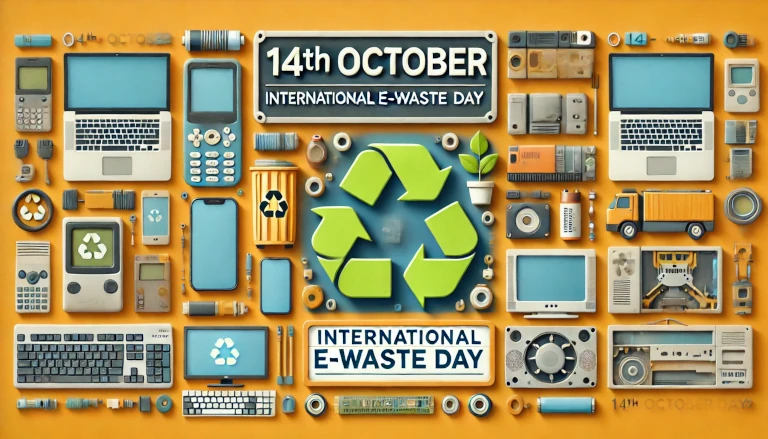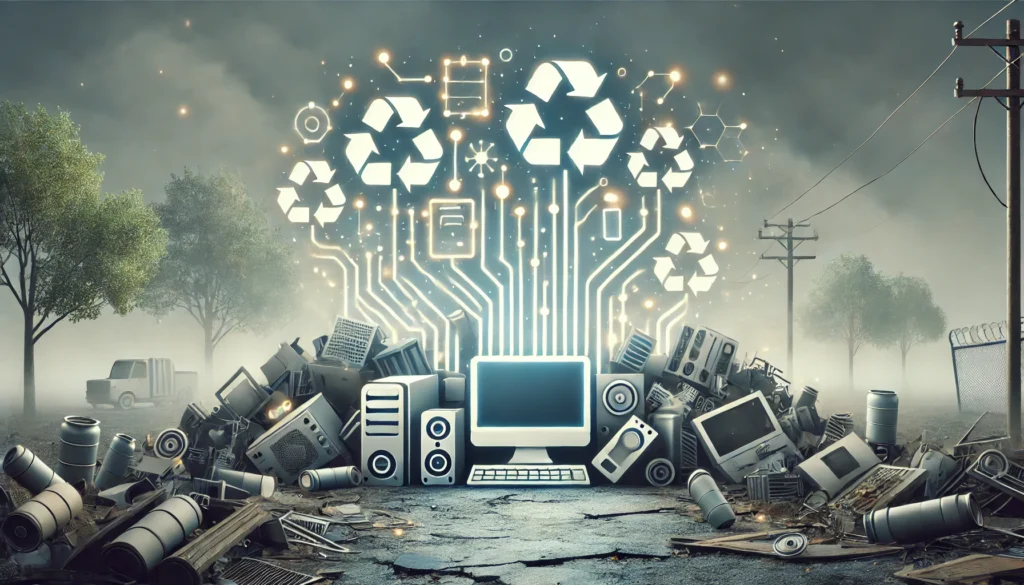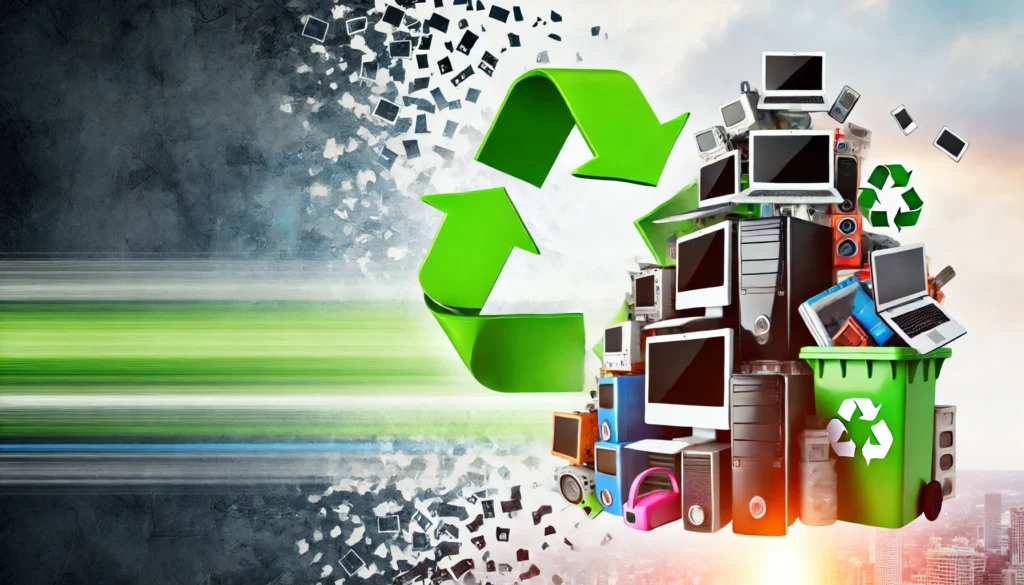International E-Waste Day, observed every year on 14th October, raises awareness about the environmental and health impacts of electronic waste (e-waste). With the rise of digital devices and rapid technological advancements, e-waste has become one of the fastest-growing waste streams in the world. Unfortunately, many electronic devices are improperly discarded, leading to pollution and resource depletion. This day serves as a reminder of our shared responsibility to manage e-waste sustainably by reducing, reusing, and recycling electronic items.
What is E-Waste and Why is it Harmful? 💻🛢️
E-waste includes discarded electronic devices like smartphones, computers, tablets, and other gadgets. When not disposed of properly, these items can release hazardous substances, including lead, mercury, and cadmium, which pose risks to both human health and the environment. According to the Global E-Waste Monitor, approximately 53.6 million metric tonnes of e-waste were generated in 2019 alone, and this number is expected to grow. Here’s why e-waste poses significant threats:
- Soil and Water Contamination 🌍:
When electronics end up in landfills, the harmful chemicals in them can leach into the soil, polluting groundwater sources and affecting local ecosystems. - Air Pollution 🌫️:
Burning e-waste releases toxic fumes into the air, contributing to air pollution and respiratory issues among nearby populations. - Resource Depletion 🏗️:
Many electronic devices contain valuable metals like gold, silver, and copper. Improper disposal results in a loss of these resources, increasing the need for mining, which has its own environmental impacts.
The Importance of International E-Waste Day 🌐
International E-Waste Day is essential for promoting awareness and action regarding e-waste. Here’s how this day contributes to a more sustainable future:
1. Educating the Public on E-Waste Management 🧠:
Through events, workshops, and online campaigns, International E-Waste Day helps people understand the importance of e-waste recycling and how they can contribute to minimizing waste.
- Example: Many cities organize free e-waste drop-off days, where people can safely dispose of their old electronics without charge.
2. Encouraging Recycling and Resource Recovery ♻️:
Recycling facilities can extract valuable materials from e-waste, reducing the need for mining and conserving natural resources.
- Tip: Look for certified e-waste recyclers who comply with environmental regulations to ensure your devices are recycled responsibly.
3. Supporting Circular Economy Initiatives 🔄:
International E-Waste Day also emphasizes the importance of the circular economy, where products are designed for long-term use, repair, and recycling. This reduces the overall environmental impact and promotes sustainability.
How You Can Participate in International E-Waste Day 🌍
Anyone can contribute to the goals of International E-Waste Day by taking simple, meaningful actions. Here are ways you can get involved:
1. Recycle Your Electronics Properly 🛠️:
Find local e-waste recycling centers that can safely handle and process electronic waste. Many municipalities and retailers have take-back programs, especially for items like phones, batteries, and computers.
- Example: Some major tech retailers offer trade-in programs where you can return old devices for recycling and, in some cases, receive store credit.
2. Donate or Repurpose Usable Electronics 💻:
Before disposing of electronics, consider whether they can still be used. Donating functional devices to schools, charities, or community centers can extend their lifespan and reduce waste.
- Tip: There are organizations that refurbish old computers and donate them to underprivileged students, providing both an educational tool and a sustainable alternative.
3. Join or Promote E-Waste Collection Drives 🗓️:
Many communities hold e-waste collection drives around International E-Waste Day. Participate in local events, or even organize one in your community. By spreading the word, you can help others make more informed choices about their e-waste.
4. Reduce, Reuse, and Refuse 🚫:
Consider adopting habits that limit the amount of e-waste you generate. For example, refuse unnecessary gadgets, reduce by buying only what you need, and reuse devices by choosing refurbished items or repairing broken ones instead of buying new.
Key Facts About E-Waste 🌎
- Only 17.4% of global e-waste was formally collected and recycled in 2019, according to the United Nations.
- E-waste represents 70% of the toxic waste in landfills, even though it only accounts for 2% of total waste.
- Recycling 1 million laptops saves the energy equivalent to the electricity used by over 3,500 homes in a year.
Protecting Our Planet, One Device at a Time 🌱
As technology advances, e-waste will continue to grow. However, by adopting sustainable practices, we can reduce the impact of electronic waste on our planet. This 14th October, join the movement for a cleaner future by responsibly disposing of your electronics and spreading awareness about the importance of International E-Waste Day. Together, we can make a difference for a greener, more sustainable planet.
Discover more from Green Ecosystem - Renewable Energy, Agriculture, and Environmental Sustainability
Subscribe to get the latest posts sent to your email.


